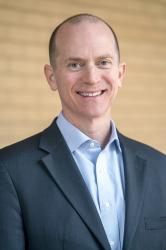Bono and the One Campaign want us to sign a petition encouraging the government to spend 1 percent of the U.S. budget for aid to developing countries. The One Campaign states that this would “transform the futures and hopes of an entire generation of the poorest countries.”
Now I admire the intentions of Bono to fight against poverty and he puts his money where is mouth is. But how do we know that increased aid will make a difference? How will the money be spent? Billions of dollars of aid have poured into developing nations, often with minimal if any positive results. Why does increasing something that really hasn’t worked going to make it better. I would understand and support it if we saw results that aid really makes a difference in providing a foundation for sustainable growth that would enable developing nations to lift themselves out of poverty, but this has not been the case. Aid often goes to the hands of corrupt leaders or gets squandered away. Further it is too often connected to ideology that has little or nothing to do with development or poverty, e.g., population control. How many millions of dollars a year go into population control programs despite little or no evidence of a causal relationship between increased population and poverty? In fact, population can often be a positive element for economic growth. See Jacqueline Kasun’s book The War Against Population or Julian Simon’s the Ultimate Resource.
But what if the problem is not insufficient aid, but something else?
According to Hernando de Soto the problem is the Mystery of Capital. There are billions of dollars of “dead” assets in the developing world. Assets that cannot be turned into capital and thus can’t be an engine for economic growth. There is also a lot of saving in the developing world. De Soto writes:
Even in the poorest countries the poor save. The value of savings among the poor is, in fact, immense—forty times all the foreign aid received throughout the world since 1945. In Egypt, for instance, the wealth that the poor have accumulated is worth fifty-five times as much as the sum of all direct foreign investment ever recorded there including the Suez Canal and the Aswan Dam. In Haiti, the poorest nation in Latin America, the total assets of the poor are more than one hundred and fifty times greater than all the foreign investment received since Haiti’s independence from France in 1804.
He then writes:
If the United States were to hike its foreign aid budget level to the level recommended by the United Nations—0.7% of national income—it would take the richest country on earth more than 150 years to transfer to the world’s poor resources equal to what they already possess.
Because these assets are not properly documented with legal title etc, they cannot be turned into capital to start businesses and create wealth like they are in the developed world where we do this every time an entrepreneur mortgages his house to start a business. Now DeSoto’s work is not a panacea, but it addresses some serious problems that need to be addressed. It also recognizes that rule of law, private property, and economic and entrepreneurial opportunity are needed for development.
The One Campaign is exciting, and it is supported by host of cool people. But although it feels good it doesn’t mean that it is the answer. The problem is a lot more complex than the One people make it out to be, but their way has been tried and tried to little avail. Maybe government aid isn’t the answer after all.

